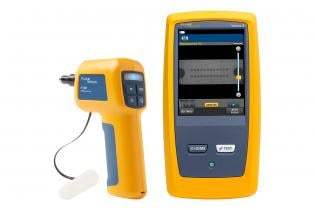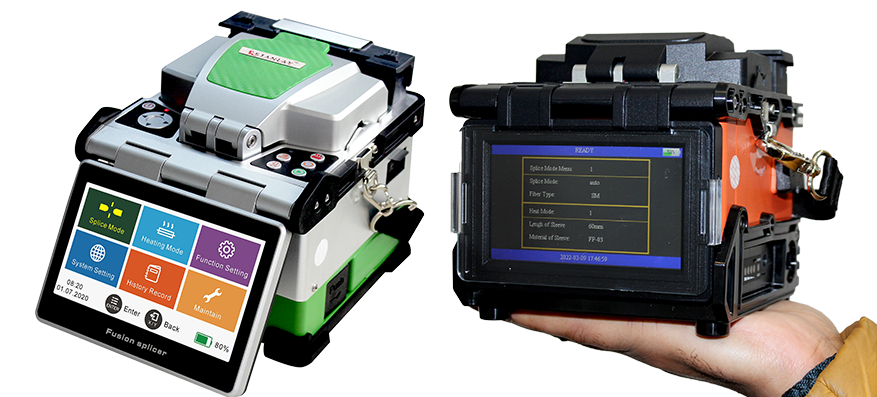Discovering the Impact of Robotic Vision on Modern Production Techniques and Quality Assurance
Robotic vision technology is transforming the landscape of contemporary production and quality assurance. By incorporating innovative imaging systems and expert system, suppliers can accomplish extraordinary degrees of accuracy and effectiveness. This shift not just optimizes production procedures but also addresses crucial obstacles in keeping item requirements. As industries significantly count on these innovations, the effects for future manufacturing techniques remain to be fully explored. What will this imply for the competitive dynamics of the market?
Understanding Robotic Vision Modern Technology
Robotic vision innovation acts as the foundation of automation in modern-day manufacturing. It encompasses making use of video cameras, sensors, and synthetic knowledge to make it possible for robots to translate and react to visual information from their setting. This innovation enables robots to identify, locate, and assess things, making them capable of carrying out complicated jobs such as assembly, assessment, and product handling with precision. The combination of equipment understanding algorithms additionally enhances the capacity of robot vision systems, enabling them to adjust to varying problems and enhance in time. By processing images and data in real-time, robotic vision systems can promote much faster decision-making and reduce mistakes in manufacturing processes (fibre testing equipment). This innovation not just improves functional performance however additionally guarantees that quality standards are fulfilled consistently. As the production landscape remains to advance, understanding the ins and outs of robot vision technology becomes essential for leveraging its prospective completely
Advantages of Robotic Vision in Manufacturing
Robotic vision technology provides substantial advantages in production by improving accuracy and accuracy in tasks such as quality control and setting up. This raised level of detail guarantees that products fulfill rigorous criteria, reducing waste and revamp. Furthermore, the combination of robot vision can cause boosted manufacturing efficiency, enabling makers to maximize their procedures and accomplish higher result rates.
Boosted Precision and Accuracy
In modern manufacturing, enhanced precision and accuracy are vital for maximizing manufacturing processes and ensuring item quality. Robotic vision systems enable makers to execute complex tasks with impressive uniformity. These systems make use of sophisticated imaging modern technologies to discover minute information and variations in products, parts, and completed items. By examining visual information in real-time, robotic vision considerably decreases human mistake, bring about less defects and higher top quality criteria. In addition, enhanced precision in dimensions and positioning facilitates much better alignment in assembly procedures, which is crucial for intricate designs. Eventually, the combination of robot vision not just strengthens the integrity of making outputs however additionally fosters self-confidence amongst consumers pertaining to product honesty and performance. This precision is important in industries where high quality is critical.
Enhanced Manufacturing Performance

Suppliers are significantly turning to vision systems to increase manufacturing efficiency across different processes. These innovative systems enable real-time assessment and monitoring, considerably reducing downtime caused by mistakes or problems. By integrating robotic vision, business can automate quality assurance, enabling faster identification of issues and decreasing the requirement for human intervention. This leads to streamlined workflows, as robotics can quickly adjust to changes in manufacturing demands without giving up precision. In addition, vision systems assist in much better inventory management by precisely tracking parts and products, making certain perfect source utilization. Ultimately, the fostering of robotic vision not only enhances efficiency yet likewise adds to higher outcome rates, minimized functional prices, and boosted general productivity in the production industry.
Enhancing High Quality Control Processes
Robotic vision innovation considerably improves high quality control procedures in manufacturing by using precision inspection techniques. These sophisticated systems help with real-time defect discovery, ensuring that items satisfy rigorous high quality criteria. Therefore, makers can lessen waste and boost overall effectiveness.
Precision Evaluation Techniques
Precision assessment methods have actually revolutionized quality assurance processes in production, allowing the detection of min issues that typical methods may neglect. These techniques take advantage of progressed imaging modern technologies, such as high-resolution cams and laser scanning, to attain exceptional precision. By making use of robot vision systems, suppliers can automate assessment tasks, making certain constant efficiency and minimizing human mistake. The combination of equipment discovering algorithms in addition boosts these systems, allowing them to adjust and boost over time. Additionally, accuracy examination assists in the identification of refined variations in product measurements and surface area coatings, which can significantly impact general product high quality. Because of this, producers can apply corrective activities a lot more swiftly, ultimately causing reduced waste and enhanced consumer satisfaction.
Real-Time Issue Detection
Using advanced imaging modern technologies, real-time problem detection changes quality control processes in production. By integrating high-resolution cameras and sophisticated algorithms, suppliers can promptly identify abnormalities during manufacturing. This technology assists in prompt corrective actions, minimizing waste and enhancing total effectiveness. Real-time systems analyze items as they move along the assembly line, ensuring that issues are detected and dealt with immediately manufacturing schedules. Additionally, the execution of equipment understanding improves the precision of these systems, permitting them to adapt to new flaw patterns in time. As a result, suppliers take advantage of improved item quality and lowered operational prices. Ultimately, real-time issue discovery not only enhances processes yet likewise cultivates a culture of continual renovation in modern-day manufacturing environments.
Real-Time Data Analysis and Decision Making
In the vibrant landscape of production, real-time data evaluation encourages systems to make swift, informed decisions. By leveraging innovative robotic vision modern technologies, producers can collect and refine vast amounts of data instantly. These systems assess visual inputs to check production processes, ensuring that any variances from top her comment is here quality requirements are found you could look here and dealt with without delay. As a result, manufacturers can maximize operations by reapportioning resources and changing operations based on real-time understandings.
Moreover, the combination of data analytics enables predictive upkeep, where potential tools failings are prepared for prior to they disrupt production. This proactive approach decreases downtime and improves general efficiency. optical measurement system. The capacity to make data-driven choices in actual time significantly reduces waste and boosts product top quality, allowing manufacturers to react to market demands promptly. Because of this, real-time data analysis not only enhances production however also promotes a society of continuous enhancement in contemporary manufacturing environments
Difficulties in Implementing Robotic Vision Systems
Executing robotic vision systems in making provides a variety of obstacles that can hinder their performance. One significant obstacle is the intricacy of incorporating these systems with existing equipment and workflows. Producers typically encounter compatibility problems with legacy devices, bring about raised prices and downtime. In addition, the variability in item forms, sizes, and materials can make complex the calibration of vision systems, requiring considerable training and fine-tuning.
An additional obstacle exists in refining big volumes of visual data in actual time. High-performance computer resources are crucial, which may call for more investment in infrastructure. There is a shortage of skilled workers capable of managing and preserving these advanced systems, leading to prospective operational inefficiencies. Ultimately, making sure the integrity and accuracy of robot vision systems under differing ecological problems presents a constant obstacle. Dealing with these concerns is important for maximizing the possible advantages of robot vision in production.
Future Trends in Robotic Vision for Production
As developments in expert system and maker understanding continue to develop, the future of robotic vision in production shows up increasingly promising. Arising fads show a change towards extra innovative imaging technologies, such as 3D vision systems and hyperspectral imaging, which will improve accuracy in high quality control procedures. Integration with read the article the Net of Things (IoT) will certainly enable real-time information analysis, allowing robotic systems to adapt rapidly to changes in the production atmosphere. In addition, the advancement of collaborative robots (cobots) furnished with innovative vision capabilities is anticipated to facilitate seamless human-robot communications, boosting effectiveness and safety and security on the manufacturing facility flooring. Furthermore, the unification of side computer will encourage robotic vision systems to refine information in your area, lowering latency and allowing faster decision-making. These innovations will certainly not just enhance producing processes however also considerably boost item quality, placing robot vision as a keystone of future commercial operations.
Regularly Asked Inquiries
Just How Much Does Robotic Vision Modern Technology Usually Expense?
Robotic vision technology usually costs between $10,000 and $100,000, depending upon the intricacy and specifications. Factors influencing price consist of sensing unit high quality, software application capabilities, and assimilation requirements, making it vital to examine certain project demands.
What Industries Are Many Impacted by Robotic Vision Innovations?
Robotic vision innovations considerably influence markets such as manufacturing, automotive, electronics, and food processing - robotic vision. These industries take advantage of boosted automation, enhanced quality assurance, and increased effectiveness, resulting in structured operations and lowered labor expenses
Can Robotic Vision Equipments Be Integrated With Existing Equipment?
Robotic vision systems can certainly be integrated with existing machinery. This integration improves functional effectiveness, allowing makers to utilize progressed modern technologies without the requirement for complete overhauls, therefore optimizing manufacturing procedures and keeping top quality standards.

What Skills Are Required to Operate Robotic Vision Equipments?
Operating robot vision systems requires proficiency in programs, an understanding of equipment learning, understanding of photo handling methods, and the capability to troubleshoot hardware and software application concerns, making sure seamless integration and suitable performance within making environments.
Exist Any Security Worry About Robotic Vision in Production?
